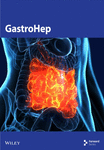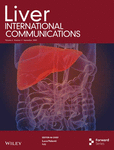Irritable Bowel Syndrome (IBS) is a common functional gastrointestinal disorder with a population-based prevalence of 5-20%. It is characterized by long-lasting, sometimes lifelong, abdominal pain/discomfort and disturbed bowel function and affects people of all races and ages and both genders worldwide. The diagnosis is based on typical symptoms in the absence of structural or metabolic abnormalities that can explain the disorder and supported by a high prevalence of comorbidity. The symptom-based diagnostic criteria, called the Rome criteria, are accepted internationally and used for research and practice.
The care for patients with IBS is unsatisfactory despite rapidly increasing evidence-based knowledge. The pathophysiology of this “biopsychosocial” disorder relies on the hypotheses that genetic and environmental factors (infections, food, stress, abuse history, and other precipitating factors) cause gastrointestinal motor disturbances, visceral hypersensitivity, abnormal central processing of sensations, or psychological disturbances leading to symptoms. Ongoing trials to improve the care of these patients and to replace today's symptom-based diagnosis by positive tests based on biomarkers in the blood, faeces, and tissue suffer from insufficient understanding of the aetiology and pathophysiology. The heterogeneity of symptoms, signs, and treatment modalities could indicate that IBS is a variety of disorders. We are interested in articles (original research papers and reviews) that involve all aspects of IBS. Potential topics include, but are not limited to:
- Genetics
- Epidemiological studies (gender, age, races, culture, family, geography, duration, etc.)
- Symptomatic subgroups (GI symptoms, comorbidity, self-limiting, etc.)
- Food intolerance, allergy, infections, inflammation, and so forth
- Comorbidities (pelvic pain, musculoskeletal disorders, psychosocial problems, sleeping disturbances, etc.)
- Pathophysiology of the gut (motor disturbances, hypersensitivity, intestinal permeability, inflammation, GI hormones, signalling, receptors, etc.)
- Pathophysiology of the central nervous system (imaging, hormones, receptors, transmitters, etc.)
- Brain-gut interaction
- Diagnosis (symptoms, biomarkers in blood, tissue, and faeces, microbiota, etc.)
- Differential diagnosis and overlapping conditions
- Pharmacological and dietary treatment, psychosocial interventions, teaching, and an integrated approach
- Complementary and alternative medicine





